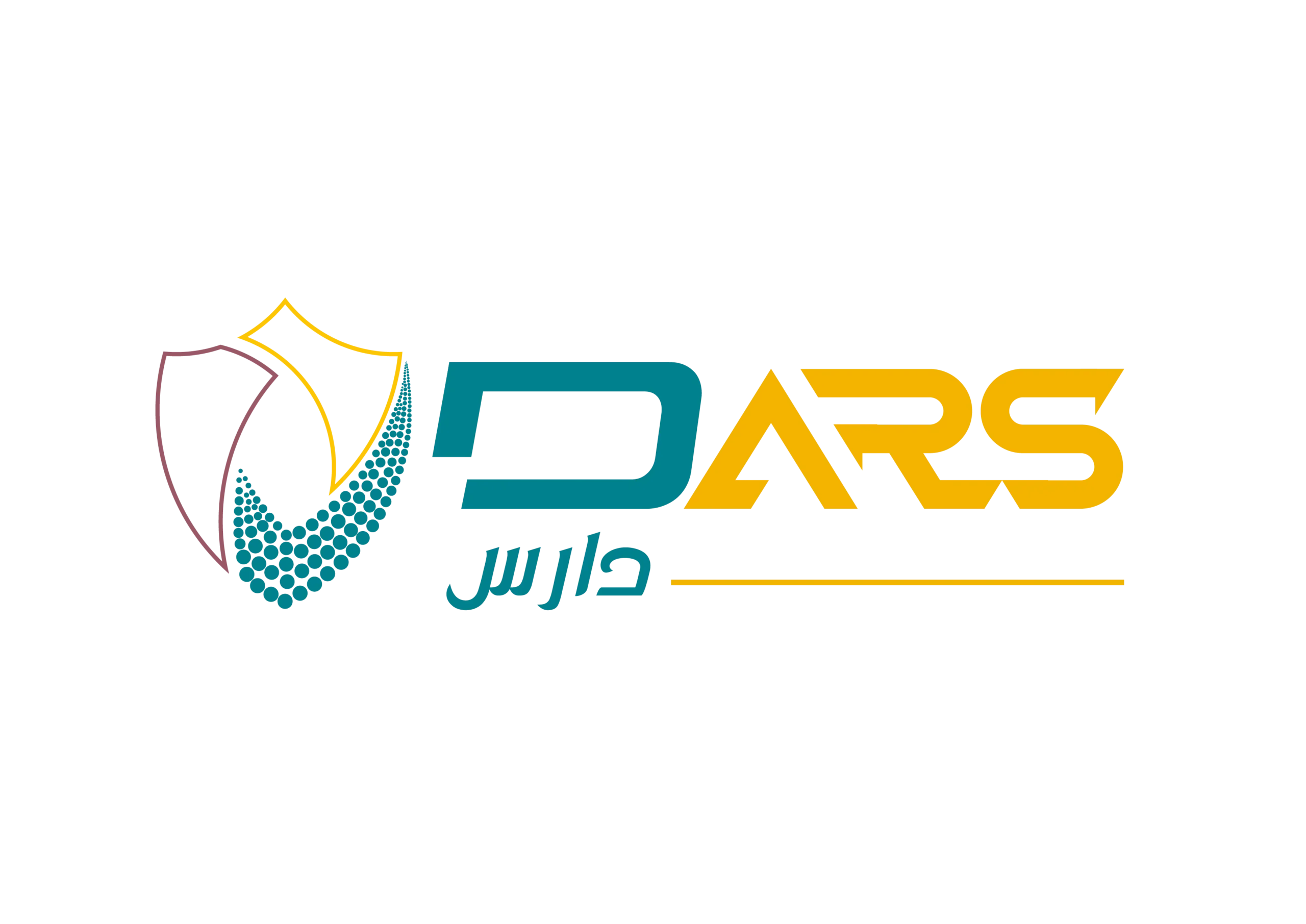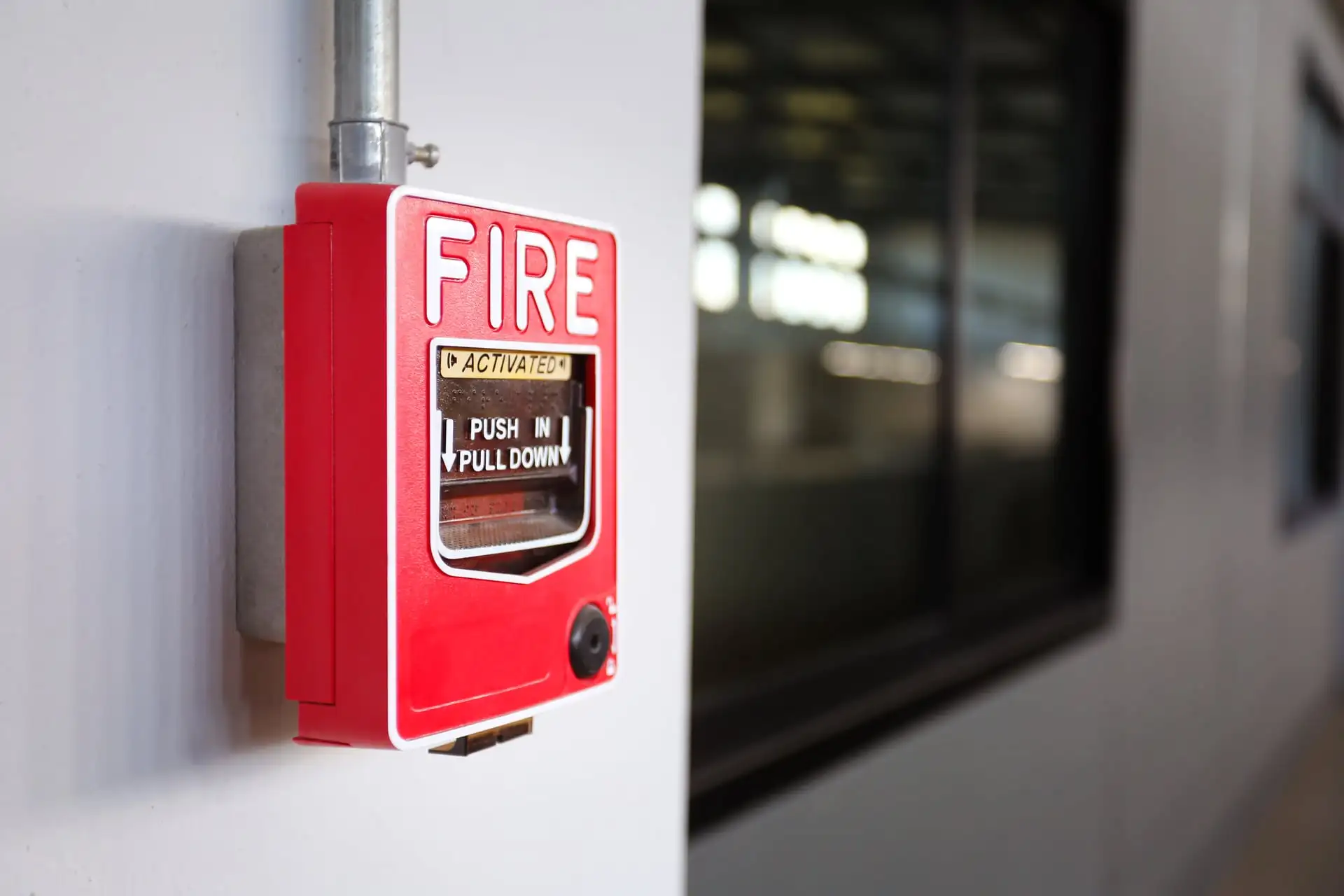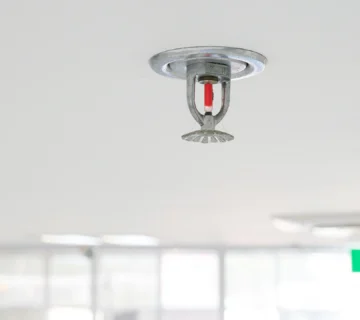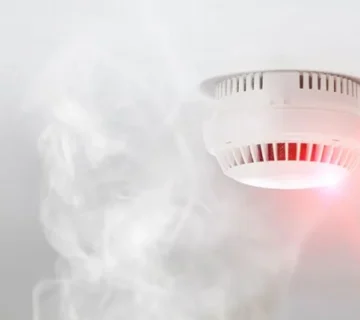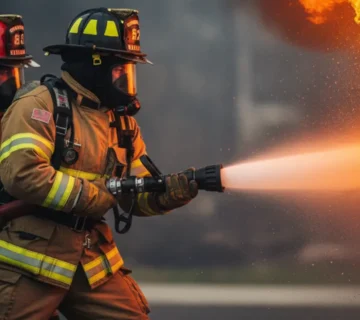Why Fire Alarm Systems Matter in Saudi Arabia
A fire alarm system is one of the most critical safety infrastructures in any building, serving as the first line of defense against fire hazards. By detecting early signs of smoke, heat, or flames, these systems provide alerts that can save lives and minimize property damage. In Saudi Arabia, where urban development is rapidly expanding, the importance of reliable fire alarms cannot be overstated. From high-rise towers in Riyadh to industrial complexes in Jeddah, the demand for compliant and advanced systems continues to grow.
What makes the local context unique is the regulatory framework enforced by Saudi Civil Defense requirements, the Saudi Building Code (SBC), and alignment with NFPA compliance. These frameworks ensure that fire protection systems meet international benchmarks while addressing the specific risks present in the Kingdom. For companies like DarAlhmaya, understanding both the legal and technical landscape is not just about installation it’s about safeguarding communities through compliance and innovation.
What Types of Fire Alarm Systems Are Commonly Used in Saudi Arabia?
Basic Components and Types
Every fire alarm system, regardless of complexity, is built around a few essential components: detectors, control panels, alarms, and communication lines. In residential villas, the system may be as simple as smoke detection technology combined with audible alarms. In contrast, commercial and industrial projects require more advanced setups that integrate life safety systems with automated responses.
The most common types include:
- Conventional fire alarm systems, typically used in smaller facilities where detectors are grouped by zones.
- Addressable fire alarm systems, suited for large buildings, where each device has a unique ID for pinpoint accuracy.
- Hybrid systems, combining conventional wiring with advanced digital features.
Each choice depends on building size, occupancy, and budget, but all must align with fire safety standards set by the Saudi Civil Defense.
Advanced Features
Modern systems go far beyond simple smoke detection. Today, many installations include wireless devices, integration with sprinkler systems, and smartphone connectivity that sends instant alerts to managers and security teams. Industrial facilities often deploy gas detectors in addition to fire sensors to account for chemical hazards. These advanced features are particularly relevant for Saudi Arabia’s petrochemical and energy sectors, where rapid response is critical.
Residential vs. Commercial Applications
In residential spaces, systems focus on simplicity and cost-effectiveness. Families prioritize reliable smoke alarms, sometimes with voice alerts for children or elderly residents. In commercial and industrial facilities, however, compliance is not optional. Malls, hospitals, and factories must invest in systems that integrate with fire protection solutions such as sprinklers, fire doors, and emergency lighting. This distinction emphasizes how context dictates the design and complexity of installations.
Legal Requirements and Standards for Fire Alarm Systems in Saudi Arabia
Saudi Civil Defense Regulations Overview
The Saudi Civil Defense plays a central role in shaping how fire alarm systems are implemented. According to official guidelines, every building whether residential, commercial, or industrial must adhere to strict safety regulations Saudi Arabia has established. These include mandatory fire detection, accessible alarms, and structured emergency evacuation protocols.
The Civil Defense regularly inspects properties to ensure adherence, and approvals are required before new buildings can be occupied. Failure to comply can result in fines, legal action, or closure of premises, making compliance both a legal and operational priority.
Saudi Building Code and International Standards
The Saudi Building Code (SBC) ensures that local construction meets structural and safety standards, including provisions for fire alarm systems. Alongside SBC, international frameworks like the National Fire Protection Association (NFPA) codes and the International Fire Code (IFC) provide global best practices.
This combination means that contractors and consultants working in Saudi Arabia must stay informed about both local and global updates. DarAlhmaya, for example, emphasizes full compliance with SBC, NFPA, and other recognized standards to maintain credibility and deliver trust to clients.
Mandatory Equipment and Infrastructure
Depending on the building type, regulations require specific installations such as:
- Smoke and heat detectors in every floor or compartment
- Centralized fire control panels for multi-floor buildings
- Integration with emergency communication systems
Such measures ensure that fire detection is not isolated but part of a holistic life safety system. In large commercial towers, these systems often tie into security control rooms, allowing for faster coordination during emergencies.
Penalties for Non-Compliance
The Kingdom takes fire safety very seriously, particularly in light of past incidents in crowded venues. Businesses found non-compliant face immediate penalties such as suspension of licenses, closure orders, or significant fines. These strict measures underline the necessity of prioritizing proper fire alarm installation from day one.
How Often Should Fire Alarm Systems Be Tested and Maintained?
Recommended Testing Intervals
Compliance doesn’t end with installation. Systems must be routinely tested to ensure functionality. Best practices include weekly visual checks of alarm panels, monthly testing of detectors, and quarterly or annual inspections by certified professionals. In Saudi Arabia, Civil Defense guidelines align with these schedules, stressing the importance of proper documentation.
Importance of Regular Maintenance
Neglecting maintenance not only risks system failure during emergencies but also breaches legal requirements. A single faulty detector in a critical area can compromise an entire facility. Companies like DarAlhmaya emphasize proactive maintenance programs to ensure reliability, reduce false alarms, and extend system lifespan.
Consequences of Neglect
Buildings that skip inspections often face higher insurance premiums, failed compliance audits, or even operational shutdowns. In contrast, a robust maintenance plan builds confidence among tenants, employees, and regulatory authorities. This balance of safety and compliance is what positions reliable providers as indispensable partners in long-term building management.
How Fire Alarm Systems Help in Protecting Lives and Property
The ultimate purpose of a fire alarm system goes far beyond compliance it is about safeguarding human life and preserving valuable assets. When a fire breaks out, every second counts. Early detection allows occupants to evacuate before smoke or flames spread, significantly reducing risks of suffocation, injury, or fatalities. In Saudi Arabia, where many facilities accommodate thousands of people daily, from malls to hospitals, a reliable alarm system can be the deciding factor between a controlled evacuation and a tragic disaster.
One of the most important benefits is how these systems facilitate emergency evacuation. Once activated, alarms immediately notify occupants, guide them toward designated exit routes, and signal building management or security staff to execute evacuation protocols. By integrating with life safety systems, alarms often trigger automatic actions such as unlocking fire doors, turning on emergency lighting, and shutting down elevators to prevent unsafe use during a fire.
For businesses, fire alarms also protect continuity. A fire that goes undetected or delayed in response can cause structural damage, disrupt operations, and result in financial losses that extend beyond repairs. By contrast, early alerts supported by integrated fire protection solutions can minimize damage and allow companies to resume operations faster. In industries like petrochemicals or logistics, where downtime translates into millions of riyals lost, this protection becomes a strategic necessity rather than just a legal obligation.
Latest Innovations and Technologies in Fire Alarm Systems
As Saudi Arabia accelerates its Vision 2030 goals, smart infrastructure and cutting-edge safety technologies are becoming the norm. The evolution of fire alarm systems demonstrates this shift, with a strong move toward digital and automated solutions.
One key innovation is the rise of IoT-enabled alarms. These systems are designed with smoke detection technology that communicates directly with mobile devices, allowing facility managers to receive instant notifications no matter where they are. This connectivity shortens response times and ensures that even when a building is unoccupied, incidents are quickly escalated to emergency responders.
Another significant development is the integration of alarms with automatic fire suppression systems. In large facilities, the alarm system doesn’t just notify it can directly activate sprinklers, foam dispensers, or gas suppression units, stopping a fire at its source. This synergy between detection and suppression transforms traditional alarms into comprehensive fire protection solutions.
Advances in sensors are also revolutionizing accuracy. Modern detectors use algorithms that distinguish between harmless smoke, such as steam from kitchens, and actual fire-related particles. This innovation reduces false alarms, a persistent challenge in commercial environments. By cutting down unnecessary evacuations, businesses save on operational disruptions and maintain trust among tenants and employees.
Digital monitoring platforms are another breakthrough. Centralized dashboards now allow facility operators to monitor all devices across multiple locations, track maintenance schedules, and receive automated reports for compliance audits. This trend aligns perfectly with the Kingdom’s digital transformation goals, making it easier for organizations to align with building code compliance while leveraging technology to improve safety.
Common Challenges Faced with Fire Alarm Systems in Saudi Arabia
Despite advancements and strict regulations, implementing and maintaining fire alarm systems in Saudi Arabia presents its own set of challenges. One recurring issue is the complexity of fire alarm installation across different building types. Older buildings, for instance, may lack the infrastructure to support advanced systems, requiring costly retrofitting. High-rise towers face further complications with cabling, zoning, and ensuring that alarms are audible on every floor.
Another challenge is navigating the regulatory landscape. While civil defense requirements are clear, the inspection and approval process can sometimes be lengthy, particularly when dealing with large-scale commercial projects. Contractors and building owners must ensure that documentation is precise, equipment is certified, and systems meet all fire safety standards to avoid delays in approvals.
False alarms also remain a technical and social challenge. Even with modern sensors, cases of accidental triggers still occur. Frequent false alarms can create complacency among building occupants, reducing the effectiveness of real evacuations. They can also strain relationships with local authorities if emergency services are repeatedly mobilized for non-critical events.
Perhaps the most overlooked challenge is user awareness. While systems are designed to be automated, the human element cannot be ignored. Employees, tenants, and residents need regular training on evacuation procedures, alarm responses, and system basics. Without such awareness, even the most advanced technology cannot guarantee a smooth evacuation.
For companies like DarAlhmaya, addressing these challenges requires more than technical expertise it calls for continuous collaboration with stakeholders, from architects and contractors to facility managers and building occupants. Only then can fire alarm systems truly achieve their purpose: protecting lives and ensuring regulatory compliance.
Recommendations for Building Owners and Managers in Saudi Arabia
Owning or managing a building in Saudi Arabia carries immense responsibility when it comes to fire safety. Beyond meeting civil defense requirements, the choices made about installing and maintaining a fire alarm system directly influence the well-being of occupants. One of the first recommendations is to treat fire alarms not as a one-time purchase but as part of a broader investment in life safety systems. This mindset shift helps ensure ongoing attention to maintenance, upgrades, and compliance.
A second consideration is to engage with certified contractors and specialists. While cost efficiency is often a priority, shortcuts in fire alarm installation can lead to costly consequences in the long run. Choosing reputable providers ensures that systems align with fire safety standards, integrate seamlessly with other fire protection solutions, and pass inspections without delays.
Finally, building owners should implement structured training programs for tenants and staff. Even the most advanced systems rely on human cooperation during emergencies. Regular drills, combined with visible evacuation signage, strengthen preparedness and reduce panic when alarms are activated. By focusing on both technology and people, managers create a balanced safety culture that protects lives and secures compliance.
Staying Ahead of Compliance Requirements
Regulations around fire alarms in Saudi Arabia are not static they evolve as new risks and technologies emerge. For this reason, staying informed is a vital responsibility for all stakeholders. Updates to the Saudi Building Code and alignment with NFPA compliance often introduce new requirements around detector types, system integration, or documentation standards. Ignoring these updates can result in costly penalties and, more critically, leave buildings underprepared in the event of a fire.
The best approach is proactive engagement. Building owners and facility managers should schedule regular consultations with certified safety consultants and regulatory authorities. By doing so, they remain aware of shifts in safety regulations Saudi Arabia enforces and can adapt their systems before inspections occur. Some organizations go further, adopting internal compliance audits to identify gaps before external authorities arrive.
Digital transformation is also simplifying compliance tracking. Advanced systems now generate automated reports that can be submitted to inspectors, proving adherence without piles of paperwork. This digital recordkeeping not only saves time but also strengthens accountability. For a country committed to technological progress, these digital-first compliance strategies are quickly becoming the gold standard.
Choosing the Right Fire Alarm System
The decision of which fire alarm system to install depends heavily on building function, size, and occupancy. Residential spaces, for example, require simpler configurations, but commercial and industrial facilities often demand more sophisticated addressable or IoT-enabled systems. Owners should begin with a professional risk assessment, where experts evaluate building layout, potential hazards, and occupant demographics.
Another key factor is scalability. As Saudi cities continue to expand, many buildings undergo renovations or expansions. Installing a flexible system that can adapt to future needs avoids the costs of full replacement later. Integration is equally important; systems should work in harmony with sprinklers, emergency lighting, and communication platforms to create a unified safety ecosystem.
Cost considerations should not be limited to installation. A system with a slightly higher upfront price but lower long-term maintenance requirements often proves more economical than a cheaper alternative that requires frequent repairs. In other words, decision-making should balance immediate budgets with the full lifecycle cost of ownership.
The Role of Proactive Maintenance in Long-Term Safety
Maintenance remains one of the most underestimated aspects of fire safety. A system that passes inspection today may fail tomorrow if left unchecked. Dust accumulation, wiring issues, or outdated software can all undermine reliability. In Saudi Arabia, where desert conditions introduce unique environmental challenges, detectors must be regularly cleaned and recalibrated to function effectively.
Routine inspections should be approached with the same seriousness as the initial installation. Weekly, monthly, and annual checks each play a role in ensuring readiness. Building managers should maintain a log of all inspections, not only for compliance purposes but also to track performance trends. This record becomes especially valuable when systems show recurring faults, helping technicians identify and resolve root causes.
Partnering with trusted service providers also ensures continuity. Providers who understand both local civil defense requirements and international benchmarks are better equipped to deliver consistent results. By outsourcing maintenance to professionals with proven expertise, building owners reduce risks, strengthen compliance, and extend the lifespan of their systems.
Conclusion: Fire Safety as an Ongoing Commitment
Fire safety is not a static achievement but a continuous responsibility. In Saudi Arabia, where regulatory frameworks are rigorous and urban landscapes are rapidly evolving, the role of a fire alarm system extends beyond compliance into the realm of protecting lives and securing business continuity. From early detection through emergency evacuation, from cutting-edge smoke detection technology to integrated fire protection solutions, every element contributes to a culture of preparedness.
For building owners and managers, the path forward is clear: invest in quality systems, stay ahead of building code compliance, prioritize training, and embrace proactive maintenance. By doing so, they not only meet the expectations of authorities but also build trust among occupants and stakeholders.
DarAlhmaya remains committed to supporting organizations across Saudi Arabia in achieving these goals. With expertise rooted in compliance, innovation, and service excellence, the company continues to position itself as a trusted partner in fire safety. The message is simple yet powerful: safeguarding lives and properties requires not just technology, but dedication and foresight.
